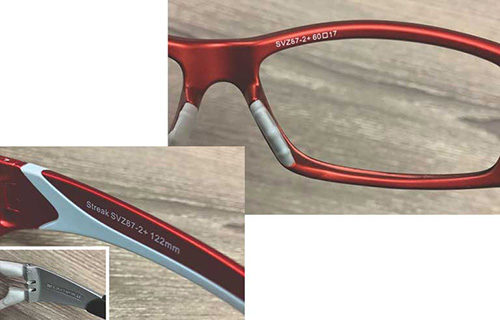Are these really safety glasses?
How can workers determine if the glasses they’re wearing are actually safety glasses?

Responding is Brent Motchan, past president of SafeVision LLC, St. Louis.
Each day, 2,000 workers experience a work-related eye injury that requires medical treatment, according to the Centers for Disease Control and Prevention. About one-third of these injuries are treated in hospital emergency rooms, and more than 100 result in one or more days away from work.
Many of these eye injuries could have been prevented with proper safety eyewear. OSHA’s standard for eye protection, adopted in 2015 by the American National Standards Institute for personal eye and face protectors, is more commonly referred to as ANSI Z87.1. The standard sets forth numerous criteria related to the general requirements, testing, permanent markings, selection, care and use of protectors (safety devices, including safety glasses) to minimize the occurrence and severity or prevention of injuries. To be compliant with ANSI Z87.1 standards, safety glasses must be tested for non-impact-rated or impact-rated lenses and frames, as well as exposure to non-ionizing radiation and chemicals. Safety glasses are also tested for ignition and corrosion. In addition to these tests, safety glasses must meet a minimum area of physical coverage to protect the wearer’s eyes.
To answer the question, the starting point is the ANSI Z87.1 standard. When an employee either buys or is handed safety glasses to wear, it’s rare that he or she receives test results at the same time. Is it possible to obtain test results? Under the ANSI standard, the answer is “yes.” It may not be easy, but the standard states that the protector (safety device) manufacturer should provide test results to the buyer upon request. The manufacturer is defined as “the business entity that marks or directs the permanent marking of the components or complete devices as compliant with the standard, and sells them as compliant.”
Another way to determine whether eyeglasses are safety glasses is to look at the markings on the glasses. As required by ANSI Z87.1, all protectors (safety glasses) should bear permanent and legible markings in specified locations. Rather than getting technical with all protective devices, let’s review the markings of the most familiar safety glasses: standard (often called plano glasses) and prescription (often referred to as Rx eyewear).
Plano frames are marked either “Z87 basic impact” or “Z87+” if the frame is impact rated (high-mass impact and high-velocity impact). In addition, the frame should show the manufacturer’s mark or logo. Z87.1 requires that the protector (frame) marking be placed in relatable proximity to each other. Manufacturers’ marks or logos are exempt from proximity requirements if they are clearly present elsewhere on the product.
Prescription safety frames are slightly more complicated. The fronts of prescription safety frames should be marked with two dimensions. One is the A dimension, or the eye size. This is the distance from one side of a lens to the other. The other marking on the front of a prescription frame is the distance between lenses. The A dimension and the DBL are often separated by a block symbol. For example, “53 □ 16.”
Similar to plano safety frames, the prescription safety frame must be stamped with the manufacturer’s mark or logo, as well as the designation of standard – whether “Z87-2” for prescription safety glasses or “Z87-2+” for impact-rated safety glasses. In addition, at least one temple of the frame must have the manufacturer’s mark or logo, as well as “Z87-2” or “Z87-2+” and the temple length.
If your safety glasses show only “Z87” or the manufacturer’s mark with a “+” stamped on the lens or frame, your eyeglasses may still be ANSI compliant. This eyewear may have been produced before the adoption of the 2015 ANSI standards or before the adoption of the prior ANSI standards in 2010.
Post a comment to this article
Safety+Health welcomes comments that promote respectful dialogue. Please stay on topic. Comments that contain personal attacks, profanity or abusive language – or those aggressively promoting products or services – will be removed. We reserve the right to determine which comments violate our comment policy. (Anonymous comments are welcome; merely skip the “name” field in the comment box. An email address is required but will not be included with your comment.)

